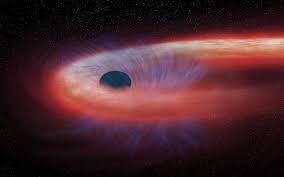
A photo released on April 19, 2018 by the European Space Agency shows this colorful image of the Lagoon Nebula to celebrate the 28th anniversary space of the the NASA/ESA Hubble Space Telescope.
In this animation the viewer is taken low over Jupiter’s north pole to illustrate the 3-D aspects of the region’s central cyclone and the eight cyclones that encircle it.

Set to lift off early next week, the Tess spacecraft will prowl for planets around the closest, brightest stars. These newfound worlds will become prime targets for future telescopes looking to tease out any signs of life.

Peruvian archaeologists armed with drones have discovered more than 50 new examples of these mysterious desert monuments in adjacent Palpa province.

Orion Span, a Houston-based space tech startup, has announced plans to launch the first-ever luxury space hotel into Earth's orbit by 2021.

Though just a test, it’s an important milestone for the Richard Branson-led company, which aims to eventually offer suborbital flights to space tourists.

Astronomers from Lancaster University have modeled conditions during the earliest moments of the cosmos.

Astrophysicists have discovered a dozen black holes gathered around Sagittarius A* (Sgr A*), the supermassive black hole in the center of the Milky Way Galaxy.

The team detected the blue supergiant star — which shone when the universe was just one-third its current age — with the help of both the Hubble Space Telescope and gravitational lensing.
A Monday SpaceX launch also carried an unconventional cargo: an experimental system known as RemoveDEBRIS, which scientists hope will help clean up Earth’s space junk-littered upper atmosphere.

This summer, NASA will launch the Parker Solar Probe, an impressively heat-resistant spacecraft destined to glide closer to the surface of the Sun than any spacecraft before it.

It was the fifth set of 10 satellites that SpaceX has launched for Iridium, whose $3 billion projects is expected to include a total of 81 satellites – with 75 launched by SpaceX.

K2-229b, a rocky planet was recently discovered by astronomers, is located 339 light years away. It is 20% larger than Earth and has a composition similar to Mercury.

The novel European Space Agency technology would scoop up atmospheric nitrogen and oxygen during near-Earth orbits and turn it into fuel.

Top officials said Tuesday that more time is needed to assemble and test the James Webb Space Telescope, which is considered a successor to the long-orbiting Hubble Space Telescope.